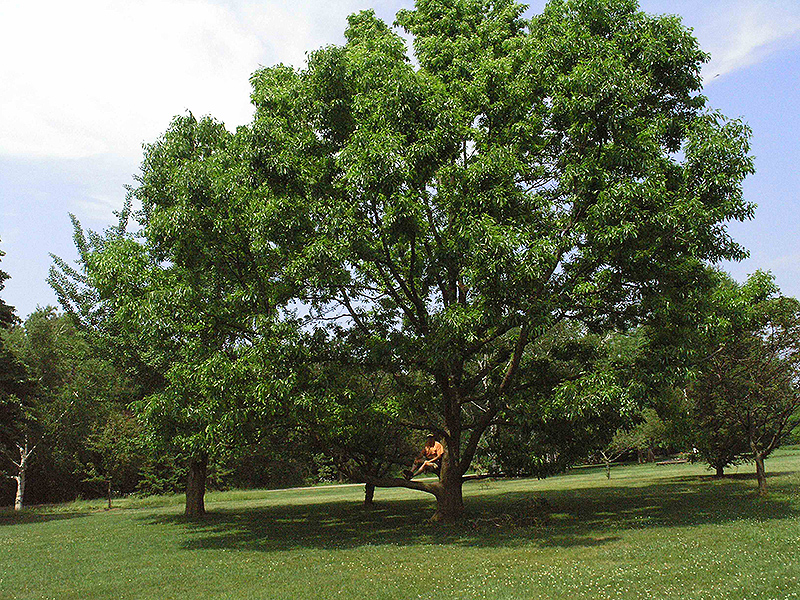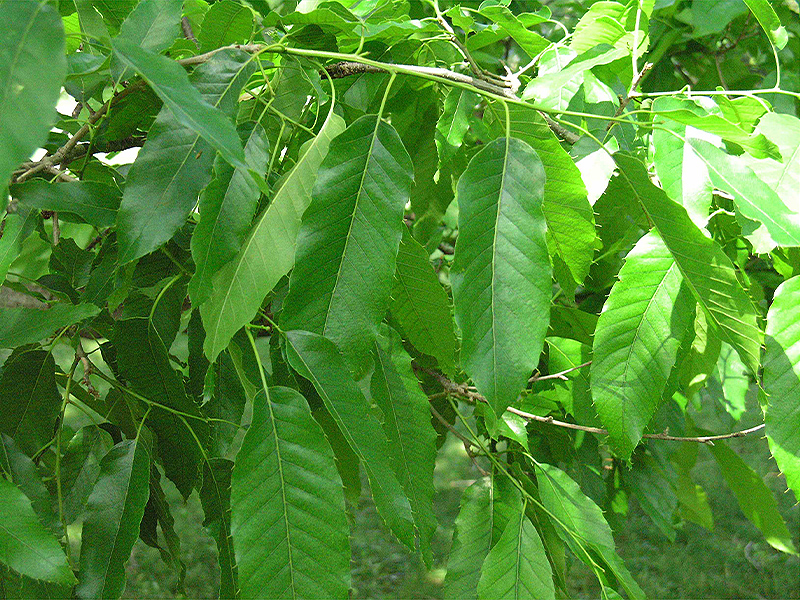
Woody > Quercus > Quercus acutissima > Quercus acutissima
Quercus acutissima
Sawtooth Oak
Origin: Japan, Korea, China, Himalaya; introduced in 1862.
Mike's
Opinion


"
Sawtooth Oaks are a large species which can grow up to 22 m if conditions are favourable. The leaves are similar to those of a chestnut tree but are smaller in size. They are salt and pollution tolerant which makes this tree a popular choice for parks. A very unusual tree and well worth the effort if space permits its inclusion.
Michael Pascoe, NDP., ODH., CLT., MSc. (Plant Conservation)
"
| Family |
| Fagaceae |
| Genus |
| Quercus |
| Species |
| acutissima |
| Category |
| Woody |
| Type |
| Tree (deciduous) |
| Pronunciation |
| USDA Hardiness Zone |
| 5 - 9 |
| Canadian Hardiness Zone |
| 4a |
| RHS Hardiness Zone |
| H7 - H3 |
| Temperature (°C) |
| (-26) - (-1) |
| Temperature (°F) |
| (-15) - 30 |
| Height |
| 12-22 m |
| Spread |
| 10-17 m |
Photographs
Description and Growing Information
Flowering Period
| General Description |
| A handsome large tree with serrated, bristle-like serrations on the leaves. Invasive and threaten native vegetation in geographical areas where they have escaped their boundaries. This species has been placed on the IUCN Red List as least concern. |
| Landscape |
| Wide spreading, shade or lawn tree, recommended for parking lots or for median strip plantings on highways. Can also be used as a residential street tree. Very tolerant to air pollution, poor drainage, and compacted soil. |
| Cultivation |
| Easily grown, transplants readily and grows quickly. This tree prefers acidic, well- drained soils but can tolerate other soils. May develop chlorosis on high pH soils, this plant thrives in the heat of the sun. |
| Shape |
| Dense, broad pyramidal in youth. Oval rounded to broad rounded and varying in form in maturity. |
| Growth |
| Medium |
| ID Characteristic |
| Leaves have small bristles on the edges; trunk and bark are gray-brown and deeply furrowed. The leaves are obovate to oblong ; very unusual in the oaks that we can grow in our climate. |
| Pests |
| None serious. May potentially have problems with galls, aphids and scales. |
| Habitat |
| Eastern Asia, deciduous forests, below 2200 m. |
| Bark/Stem Description |
| Bark is deeply ridged and furrowed on mature trees, appearing almost cork-like in texture and ash-brown in colour. |
| Flower/Leaf Bud Description |
| Woolly, gray-brown 0.5-2 cm long, edges of scales are gray, lower scales are darker brown. |
| Leaf Description |
| Leaves are alternate, simple, obovate — oblong, 8-19.5 cm long, 2.5-6.5 cm wide, serrated with bristle-like teeth. Lustrous dark green colour in summer, very similar to chestnut leaves. |
| Flower Description |
| Flowers are 7.5-10 cm long slender golden catkins which start blooming late March to early April with emerging leaves. |
| Fruit Description |
| Acorn, with spreading and re-curving scales, about 2 cm long and brown in colour. Sawtooth acorns are among the first to ripen. Attracts squirrels and other mammals. |
| Colour Description |
| Spring leaves are bright, yellow-green. Autumn colour varies from dull yellow to brown. |
| Texture Description |
| Medium texture, medium to medium coarse in winter. |
| Notable Specimens |
| Niagara Parks Botanical Gardens, Niagara Falls, Ontario, Canada. |
| Propagation |
| Winter-sow acorns in vented containers in cold frame or unheated green houses, stratify sowing indoors keeping acorns moist for 4-12 weeks at 4-10°C. |


